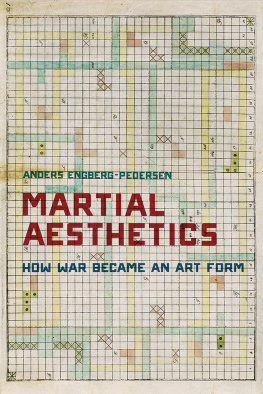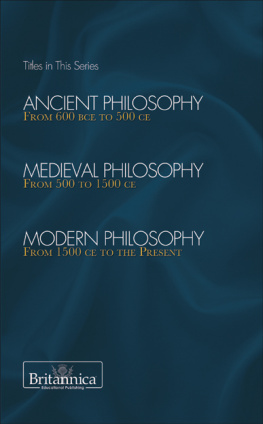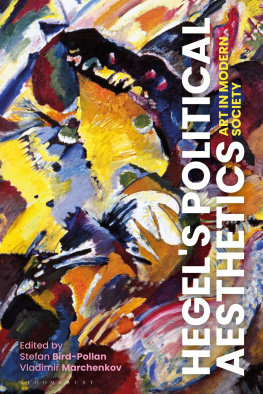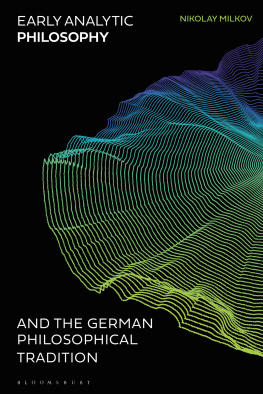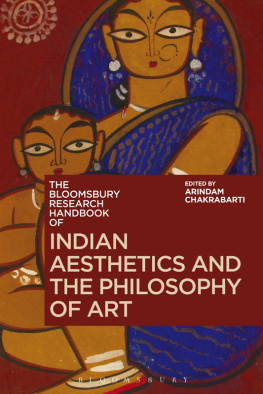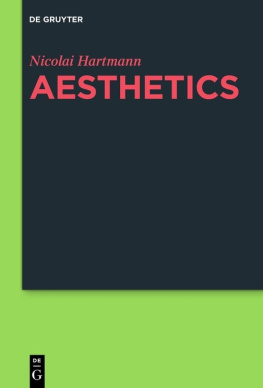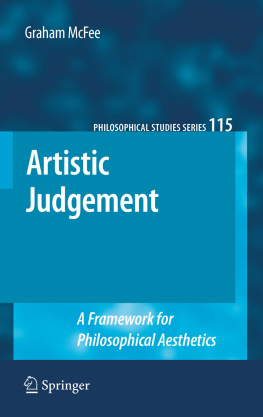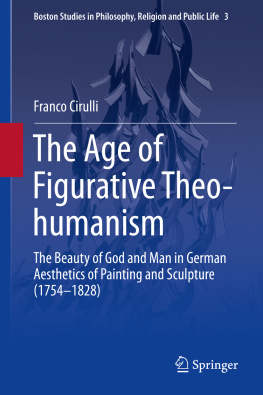THE INSISTENCE OF ART
The Insistence of Art
AESTHETIC PHILOSOPHY AFTER EARLY MODERNITY
PAUL A. KOTTMAN, EDITOR
FORDHAM UNIVERSITY PRESS
New York 2017
Copyright 2017 Fordham University Press
All rights reserved. No part of this publication may be reproduced, stored in a retrieval system, or transmitted in any form or by any meanselectronic, mechanical, photocopy, recording, or any otherexcept for brief quotations in printed reviews, without the prior permission of the publisher.
Publication of the images in Goya: Secularization and the Aesthetics of Belief was supported by a subvention from the University of California, Berkeley.
Fordham University Press has no responsibility for the persistence or accuracy of URLs for external or third-party Internet websites referred to in this publication and does not guarantee that any content on such websites is, or will remain, accurate or appropriate.
Fordham University Press also publishes its books in a variety of electronic formats. Some content that appears in print may not be available in electronic books.
Visit us online at www.fordhampress.com.
Library of Congress Cataloging-in-Publication Data
available online at catalog.loc.gov.
Printed in the United States of America
19 18 17 5 4 3 2 1
First edition
CONTENTS
PAUL A. KOTTMAN
VICTORIA KAHN
RACHEL EISENDRATH
ANDREW CUTROFELLO
KRISTIN GJESDAL
PAUL A. KOTTMAN
LYDIA GOEHR
MAARTEN DELBEKE
JON R. SNYDER
ANTHONY J. CASCARDI
J. M. BERNSTEIN
Paul A. Kottman
Considering the attention paid to artists from the early modern period by philosophers working in what we now recognize as aesthetics, considering the extent to which artworks and practices of the fifteenth through the eighteenth centuries were accompanied by an immense range of discussions about the arts and their relation to one another, and considering above all the sheer breadth and scope of the artistic achievements in the period, it is striking that so little recent effort has been made to understand the connection between early modern artistic practices and the emergence of aesthetics as a branch of philosophy over the course of the eighteenth century. Art is more often taken by philosophers and historians as a stand-in for, or reflection of, some other question, historical event, or social event of significance, rather than as being the phenomenon itself. The ten essays in this volume attempt to remedy this.
Each essay included suggests ways in which the artworks and practices of the early modern period show the essentiality of aesthetic experience for philosophical reflection, and in particular for the rise of aesthetics as a philosophical discipline, while also showing arts need for philosophy. Each contribution teaches us by example how we might better grasp central artistic and philosophical preoccupations of the preceding centuries and our own time, by asking after both early modern arts claim on philosophy and philosophical realizations of the claim of art.
This broad historical framingearly modern art and modern aestheticsimplies some delineations concerning, for instance, the divide that separates the cultures of the fifteenth, sixteenth, and seventeenth centuries in Venice, Florence, London, or Amsterdam from the eighteenth century in Knigsberg, Weimar, or Berlin. Each essay in this volume articulates that frame in its own way. Overall, however, making sense of this framing is understood here not just as a matter of establishing or gathering facts that might help us determine whether, say, Hegel ever laid eyes on a particular painting or how well Herder may have grasped Shakespeares Englishthough gathering these facts, too, is an ineliminable part of our collective work. Rather, since we do not doubt that artworks and practices from the early modern period exist alongside works of aesthetic philosophy from the eighteenth century, what we really want to know is whether these two existences are connected in some essential way. By essential way I do not just mean a further factor a so-called smoking gunbut something like what Hegel might have called the Wirklichkeit, or what earlier philosophers might have called the logos (the actuality or reality) of a connection between early modern art and aesthetic philosophy. Put another way, we want to know what reasons we might have for reconsidering the stories we already tell ourselves about early modern art and philosophical aesthetics. We want to know how, whether, and why we should reconsider the intellectual histories that have prevented these two historical phenomena from being considered together as part of our collective inheritance.
As Richard Rorty once pointed out, the German way of doing intellectual historystarting with the Greeks and working down through, for example, Cicero, Galileo and Schelling before saying anything off your own batis easily parodied.ourselves generally borrow a story from someone elseKarl Marx, say, or Hans Blumenberg. Taking the spirit of Rortys remarkthat we would do well to be more vigilant when it comes to the histories in view of which we understand our presentthe first thing this Introduction will do is consider what, in our potted histories, has been blocking, or effacing, a clearer view of the connection between early modern artistic practices and aesthetic philosophy.
There are a number of these, of course. However, I think we can usefully identify four narratives Fourth, the establishment of the Renaissance, the Baroque, or the early modern period itself, as objectively distinct, was in part predicated on scholarly methods and apparatuses that took shape in the late eighteenth century.
Let me briefly describe each of these by trying to lay bare the potted history implied or contained in each, in order to make clearer how they tumble into and compel questions under investigation in this volume. I then turn to a discussion of the essays included here.
1
One history that is commonly borrowed to explain the emergence of aesthetics in the eighteenth century was influentially told by Paul Oskar Kristeller, a German scholar of Renaissance humanism (who emigrated to the United States in 1939), in a two-part article he published in the Journal of the History of Ideas in 195152, titled The Modern System of the Arts: A Study in the History of Aesthetics.
One issue in Kristellers story, which persists whenever a version of his story is borrowed, is whether the five-art system, or the practical autonomy of the fine arts, was achieved artistically and then subsequently recognized as a practical achievement by philosophers and art theorists, or whether the very notion of art proper (or aesthetic autonomy) is the product of a discursive recognition conferred upon certain art forms by philosophers and art theorists. However, Kristeller does not really develop this implication in his account. Instead, he devotes the bulk of his attention to the way art is discussed in literary discourses or philosophical treatises, from antiquity through the Middle Ages, into the Renaissance and through the eighteenth century: the coining of the term Arti del disegno by Giorgio Vasari, the contest between the arts stressed in Leonardos Paragone, and in writers from Castiglione and Francis Bacon through the emergence of academies in France, and the distinction of the arts from the sciences articulated in the Querelle des anciens et des modernes, as in Charles Perraults Parallle des anciens et des modernes (168896). From there, Kristeller leads us to discussions of beauty that began to appear in the early decades of the eighteenth century in the work of J.-P. de Crousaz, Abb Batteux, the earl of Shaftesbury, and Francis Hutcheson (so important for later philosophers such as David Hume and Denis Diderot), and Alexander Gottlieb Baumgarten, who finally introduced the term aesthetics.
Next page

